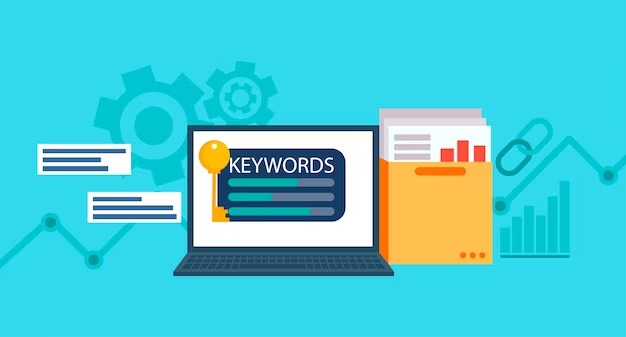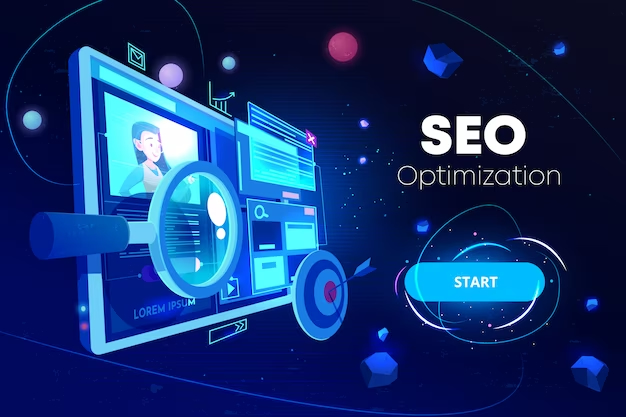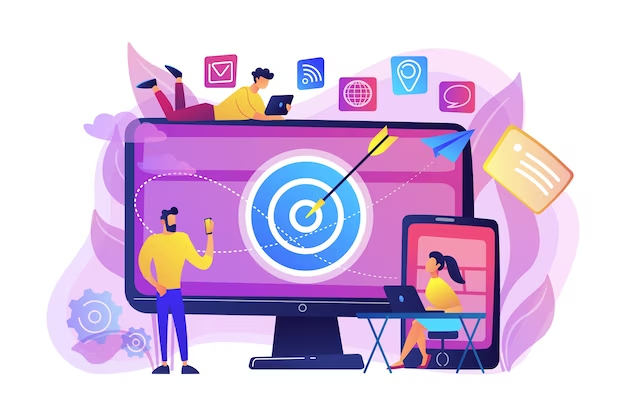Content is king, as the saying goes. But not all content is equal. If you want to stand out from the crowd and attract your target audience. You need to optimize your content for both search engines and users. Content optimization is the process of improving the quality of your content. So that it can rank higher on search engines. Driving more traffic and generating more conversions. In this article, we will explain what content optimization is. Why it is important. And how you can do it effectively.
What is Content Optimization?

Content optimization is the practice of enhancing your content. To make it more appealing and useful for your audience and search engines. It involves various aspects, such as:
Keyword Research
This is the process of finding and analyzing the best keywords for your content. Based on your niche, audience, and competitors.
These are phrases that your audience uses to search for information. It could be something related to your content, your products, or your services.
You can increase the chances of your content getting seen by using the right keywords. More views equals more clicks by your potential customers.
Content Creation
This is the process of producing high-quality and engaging content for your audience. Based on your keywords and topics.
Your content should be original, relevant, informative, and entertaining. It should provide value and solutions to your audience’s needs and problems.
Your content should also follow the best practices of content writing. Such as using concise language, writing short paragraphs, and avoiding consecutive sentences. You should also try using more transition words. And ensure to cut hard-to-read or redundant words.
Content Formatting
This is the process of presenting your content in a way that makes it easy to read and for your audience. As well as search engines like Google, Yahoo, or Bing.
Your content should have a clear and logical structure, with headings, subheadings, bullet points, lists, images, videos, and other visual elements. These elements can break up the text and improve its readability and attractiveness.
Your content should also have a catchy and descriptive title. It should start with a compelling and concise introduction. And end with a brief and persuasive conclusion that summarizes your main points.
Content Optimization for SEO
This is the process of applying the best practices of SEO to your content. So that it can rank higher on search engines and drive more organic traffic to your website.
SEO is the process of improving the quality and quantity of web traffic. By making your website more relevant for your target audience. Content optimization for SEO involves various techniques, such as:
- Using your target keywords naturally throughout your content. Especially in your title, headings, introduction, conclusion, and meta tags.
- Optimizing your content’s length, density, and frequency. According to your topic, audience, and purpose. Generally, longer and more comprehensive content tends to rank better than shorter and superficial content. As it can provide more value and information to your audience. Yet, you should also avoid stuffing your content with too many keywords or irrelevant information. As this can harm your content’s quality and readability. Which can lead to lower ranking and credibility.
- Optimizing your content’s speed, security, and mobile-friendliness. These are some of the factors that affect your content’s performance and user experience. These factors also influence your ranking and traffic.
- Optimizing your content’s links, both internal and external. These are some of the factors that affect your content’s relevance and authority. These factors also influence your ranking and traffic. You should make sure that your content has relevant and quality links. That can provide more value and information to your audience and search engines. You should also avoid and remove any broken or spammy links. Which you think can harm your content’s reputation and ranking.
Content Optimization for UX
This is the process of improving your content’s user experience (UX). Which is the impression and satisfaction that your audience has when interacting with your content.
UX is one of the most important factors that affect your content’s success and results. It can influence your audience’s behavior and actions. Such as staying on your website, clicking on your links, or buying your products or services. Content optimization for UX involves various techniques, such as:
- Understanding your audience’s needs, preferences, and expectations. And creating content that matches them. You should conduct thorough research and analysis of your audience. Such as their demographics, psychographics, pain points, goals, and motivations. And use this information to create content that can resonate with them.
- Personalizing your content for your audience, and creating content that is relevant and tailored to their specific interests, needs, and situations. You should use various methods and tools. Such as segmentation, targeting, and customization, to create content that can appeal to different segments and types of your audience. And deliver the right message and offer to the right person at the right time.
- Engaging your audience with your content, and creating content that is interactive and dynamic, can capture your audience’s attention and interest. It can also encourage them to take part and take action. You should use various elements and features. Such as quizzes, polls, surveys, games, videos, animations, and chatbots to create content that can stimulate and involve your audience, and elicit their feedback and response.
Why is Content Optimization Important?

Content optimization is important for various reasons, such as:
- It can help you improve your website’s ranking and visibility on search engines. Which can increase your organic traffic and exposure to your target audience.
- It can help you increase your website’s conversion rate and revenue. Which can improve your business performance and profitability.
- It can help you enhance your website’s reputation and authority. Which can improve your brand awareness and trustworthiness. By optimizing your content for your audience you can prove your expertise. Then you can establish yourself as a leader and influencer in your niche.
- It can help you create a loyal and engaged audience, which can improve your customer retention and satisfaction. By optimizing your content for your audience and search engines, you can provide a positive and memorable experience to your audience. Building a strong and lasting relationship with them.
How to do Content Optimization in an Effective Way?
Content optimization is not a one-time task. But an ongoing process that requires constant monitoring and improvement. To do content optimization in an effective way, you should follow these steps:
Define Your Goals and Objectives
Before optimizing your content, you should have a clear and specific idea of what you want to achieve. And also how you will measure your success.
You should set SMART goals. Which are specific, measurable, achievable, relevant, and time-bound. And align them with your business and marketing strategy.
For example, your goal could be to increase your website’s traffic by 20% in the next three months. Or to generate 50 new leads per month from your content.
Know Your Audience
The next step is to understand your target audience. Their needs, preferences, and expectations. Analyze how you can provide value and solutions to them.
You should conduct thorough research and analysis of your audience. Using various methods and tools. Such as surveys, interviews, focus groups, analytics, and personas.
You should also segment your audience into different groups and types. Based on their demographics, psychographics, behavior, and situation. And create content that is relevant and tailored to each segment.
Choose Your Keywords
The next step is to find and analyze the best keywords for your content. Based on your niche, audience, and competitors. You should use tools and techniques, such as keyword research tools, keyword planners, keyword generators, and keyword analyzers, to discover new keyword opportunities, identify keyword difficulty and search volume, and optimize your content and meta tags for your target keywords.
You should also use a mix of short-tail and long-tail keywords. As well as semantic and related keywords, to increase your content’s relevance.
Create Your Content
The next step is to produce high-quality and engaging content for your audience. Based on your keywords and topics. You should use various formats and types of content, such as blog posts, articles, ebooks, white papers, case studies, infographics, videos, podcasts, and webinars, to provide more value and information to your audience. And cater to their different preferences and needs.
You should also follow the best practices of content writing.
Format Your Content
The next step is to organize and present your content in a way that makes it easy to read and understand for your audience and search engines.
You should use various elements and features, such as headings, subheadings, bullet points, lists, images, videos, and other visual elements, to break up the text and improve its readability and attractiveness.
You should also use a catchy and descriptive title, a compelling and concise introduction, and a brief and persuasive conclusion, that summarize your main points and call your audience to action.
Optimize Your Content for SEO
The next step is to apply the best practices of SEO to your content so that it can rank higher on search engines and drive more organic traffic to your website. You should use your target keywords strategically and naturally throughout your content, especially in your title, headings, introduction, conclusion, and meta tags. Also, optimize your content’s length, density, and frequency, according to your topic, audience, and purpose.
You should also optimize your content’s speed, security, and mobile-friendliness, as these are some of the factors that affect your content’s performance and user experience, and influence your ranking and traffic. You should also optimize your content’s links, both internal and external, as these are some of the factors that affect your content’s relevance and authority, and influence your ranking and traffic.
Optimize Your Content for UX
The final step is to improve your content’s user experience, which is the overall impression and satisfaction that your audience has when interacting with your content.
You should understand your audience’s needs, preferences, and expectations, and create content that matches them. Also, personalize your content for your audience, and create content that is relevant and tailored to their specific interests, needs, and situations.
You should also engage your audience with your content, and create content that is interactive and dynamic, that can capture and retain your audience’s attention and interest, and encourage them to participate and take action.
Final Analysis
Content optimization is the key to successful online marketing, as it can help you improve your website’s ranking and visibility on search engines, increase your website’s conversion rate and revenue, enhance your website’s reputation and authority, and create a loyal and engaged audience.
To do content optimization effectively, you should follow the steps of keyword research, content creation, content formatting, content optimization for SEO, and content optimization for UX, and use various tools and techniques to enhance your content’s quality and relevance.
If you need professional help with your content optimization or web designing, you can contact us at My Content Quest.
We are a team of experienced and qualified web designers and content optimizers who can help you create and optimize your content for your audience and search engines.
We offer affordable and customized web design services and content optimization solutions that can suit your needs and goals.
Contact us today and get a free quote and consultation. We look forward to hearing from you.












